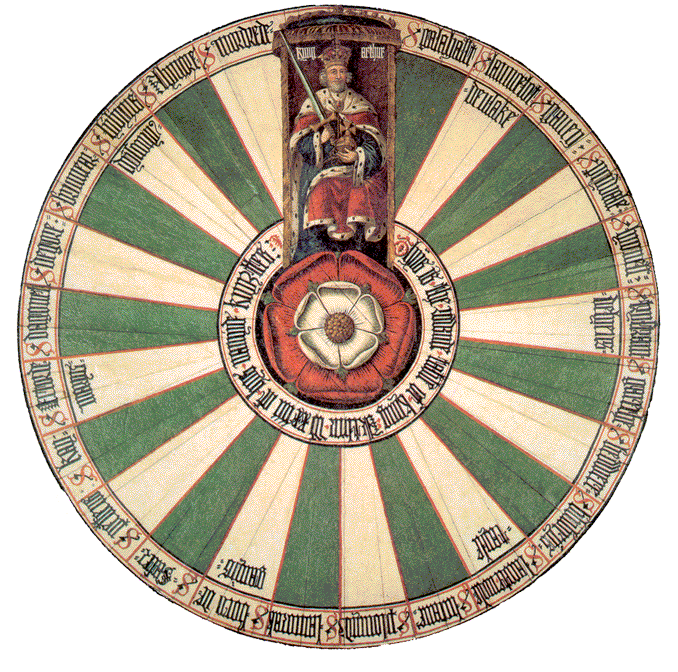
The King Arthur's Round Table has become a symbol for equality and just government.
Geoffrey of Monmouth makes no mention of a Round Table in his history of Arthur. It was the French monk Robert Wace, writing around 1155, who was the first to mention this piece of furniture in his Roman de Brut. Supposed Round Tables sites in Britain include in Bryn-Rhyd-yr-Arian, Caerleon, Penrith, Stirling, and Winchester.
Wace says that Arthur's knights sat around a round table while Arthur sat on a dais, above the Round Table. The idea here was that the knights were all equal but Arthur was still the king. Wace doesn't tell us how many knights sat around the table.
A few years later, an Englishman named Layamon in his chronicle places Arthur's court in London. The Round Table is portrayed the result of a chance meeting between Arthur and a Cornish carpenter, who offers to make for the king a table that could seat 1,600 men and be folded up and taken anywhere.
Robert de Boron tells us how Merlin ordered Uther Pendragon to construct the table based on his vision of the Last Supper Table and Joseph of Arimathea's Grail Table. Merlin instructed Uther to have the table accommodate 50 chairs; he also said to leave one chair blank, for the knight who would fulfill the Grail Quest. The Vulgate Cyclesays the Round Table sat 250 knights.
The Vulgate Cycle introduces the idea of the Siege Perilous, continuing the empty-chair theory but adding to it the caveat that anyone not anointed would perish after sitting there. Galahad, of course, was the only one able to sit there; it was he who fulfilled the Grail Quest.
The Siege Perilous is the seat (from the French siège) at the Round Table in which only the chosen Grail knight may sit without disastrous consequences. Malory tells us that it was made by Merlin ). When Galahad arrives at Camelot, his name appears on the seat destined for him.
Full references to more about The Round Table at the Rochester site.
It is unlikely that, even had it physically existed, that a wooden Round Table would have survived
No comments:
Post a Comment